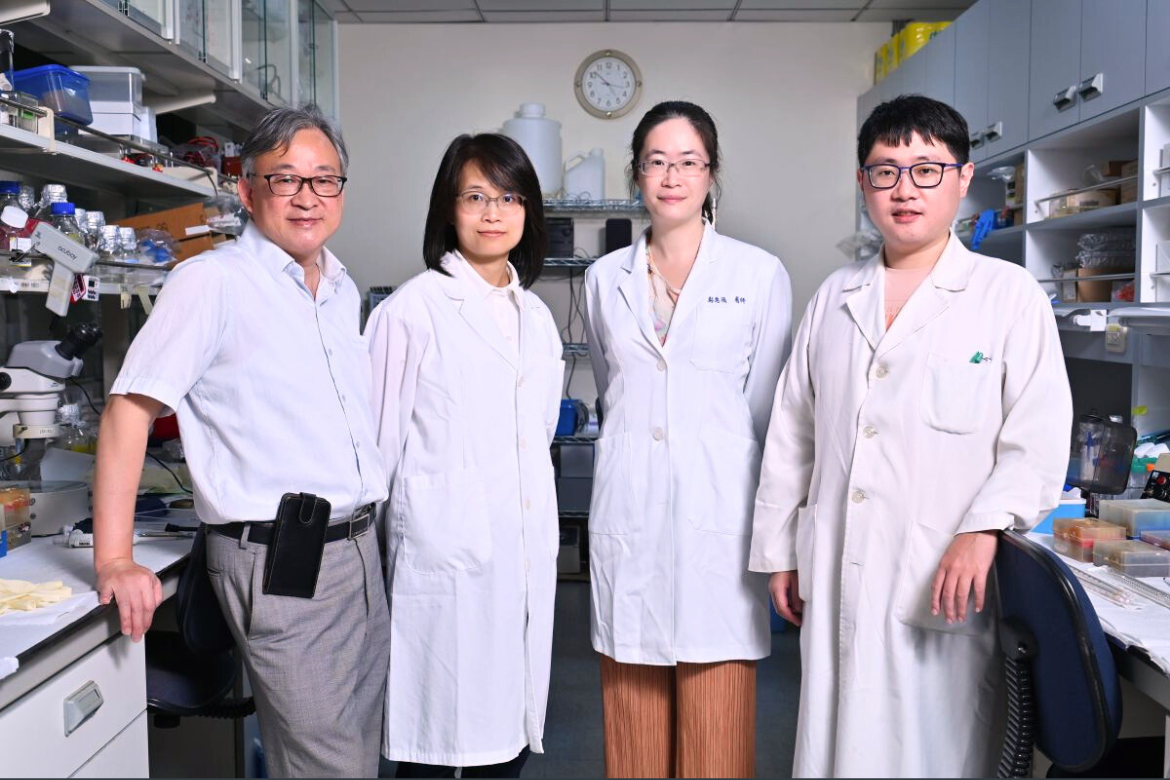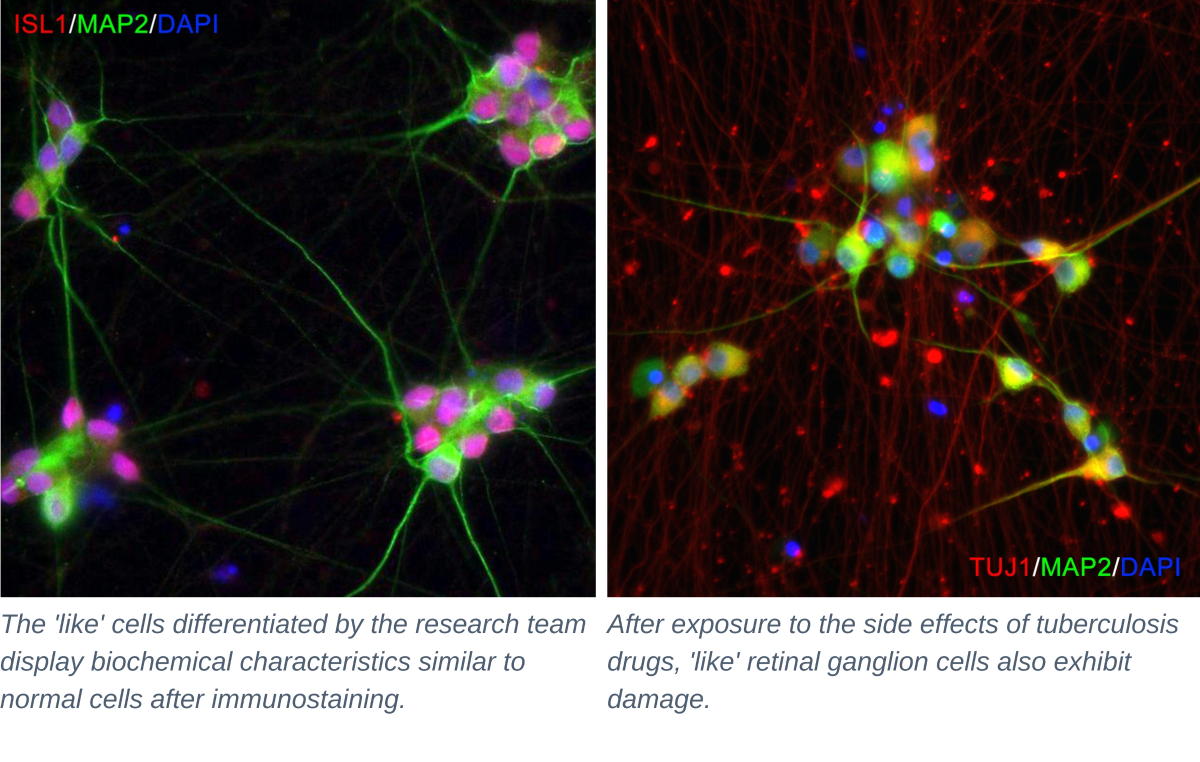RESEARCH HIGHLIGHTS
379
NYCU
Number of Academic Papers
Published by Students or Exhibition
Activities Organized by Students
- Update Date:2023-12-19
- Units:Office of International Promotion and Outreach
Breakthrough in the Treatment of Optic Nerve Disorders: NYCU and TVGH Successfully Differentiate ‘Like’ Retinal Ganglion Cells

Photograph of NYCU and TVGH Research Teams
Translated by Yi Yun Huang
Edited by Elaine Chuang
______
Edited by Elaine Chuang
______
The Brain Science Research Center at National Yang Ming Chiao Tung University (NYCU) and Taipei Veterans General Hospital (TVGH) join forces to make a groundbreaking stride in the treatment of optic nerve disorders.
In a pioneering effort, the research team at NYCU successfully differentiated human-induced pluripotent stem cells into 'retinal ganglion-like cells.' These cells, crucial in the quest for drugs to treat optic nerve disorders like glaucoma, mark a significant advancement in the field.
Understanding the Role of Retinal Ganglion Cells and Addressing Irreversible Vision Loss
Retinal ganglion cells are essential for visual perception. However, in conditions like glaucoma and other optic nerve disorders, the pathology and death of these cells can result in irreversible loss of visual function. The collaborative effort between NYCU and TVGH has led to the successful differentiation of retinal ganglion-like cells within two weeks.
The breakthrough was facilitated by the activation of three key genes—ATOH7, BRN3B, and SOX4—associated with optic nerve growth and development. These 'like' cells exhibited neural activity and biochemical characteristics similar to normal cells.
Testing Drug Side Effects: Ethambutol's Impact on "Like" Cells
To explore the potential applications of these differentiated cells, the research team tested ethambutol, a drug commonly used for treating tuberculosis. As anticipated, ethambutol caused the death of the 'like' retinal ganglion cells. Further investigation revealed abnormal autophagy, excessive reactive oxygen species (ROS) accumulation, and cell apoptosis.
In a pioneering effort, the research team at NYCU successfully differentiated human-induced pluripotent stem cells into 'retinal ganglion-like cells.' These cells, crucial in the quest for drugs to treat optic nerve disorders like glaucoma, mark a significant advancement in the field.
Understanding the Role of Retinal Ganglion Cells and Addressing Irreversible Vision Loss
Retinal ganglion cells are essential for visual perception. However, in conditions like glaucoma and other optic nerve disorders, the pathology and death of these cells can result in irreversible loss of visual function. The collaborative effort between NYCU and TVGH has led to the successful differentiation of retinal ganglion-like cells within two weeks.
The breakthrough was facilitated by the activation of three key genes—ATOH7, BRN3B, and SOX4—associated with optic nerve growth and development. These 'like' cells exhibited neural activity and biochemical characteristics similar to normal cells.
Testing Drug Side Effects: Ethambutol's Impact on "Like" Cells
To explore the potential applications of these differentiated cells, the research team tested ethambutol, a drug commonly used for treating tuberculosis. As anticipated, ethambutol caused the death of the 'like' retinal ganglion cells. Further investigation revealed abnormal autophagy, excessive reactive oxygen species (ROS) accumulation, and cell apoptosis.
Dr. Yu-Huei Weng, a researcher at NYCU's Brain Science Research Center, announced the successful development of a model capable of effectively differentiating retinal ganglion cells. This model provides valuable insights into pathogenesis, aiding the search for methods to treat optic nerve disorders.
These 'like' cells offer a safer option for testing drug side effects, presenting a convenient and rapid method to address adverse drug effects. Dr. Yu-Huei Weng emphasized the challenging nature of this breakthrough, highlighting the new possibilities it opens for the treatment and prevention of vision-related diseases.
Collaborative Research and Key Contributors
The research represents a collaborative effort between NYCU's Brain Science Research Center and TVGH. Researchers from the Department of Life Sciences and the Institute of Genomic Sciences, including Shi-Wei Chen and Xiang-Qi Liu, played crucial roles. The team also included members from TVGH, notably Dr. An-Guo Wang and Hui-Zhen Zheng, attending physicians in the Department of Ophthalmology. The findings have been published in the journal 'Cellular and Molecular Life Sciences.'
These 'like' cells offer a safer option for testing drug side effects, presenting a convenient and rapid method to address adverse drug effects. Dr. Yu-Huei Weng emphasized the challenging nature of this breakthrough, highlighting the new possibilities it opens for the treatment and prevention of vision-related diseases.
Collaborative Research and Key Contributors
The research represents a collaborative effort between NYCU's Brain Science Research Center and TVGH. Researchers from the Department of Life Sciences and the Institute of Genomic Sciences, including Shi-Wei Chen and Xiang-Qi Liu, played crucial roles. The team also included members from TVGH, notably Dr. An-Guo Wang and Hui-Zhen Zheng, attending physicians in the Department of Ophthalmology. The findings have been published in the journal 'Cellular and Molecular Life Sciences.'

Related Image(s):












